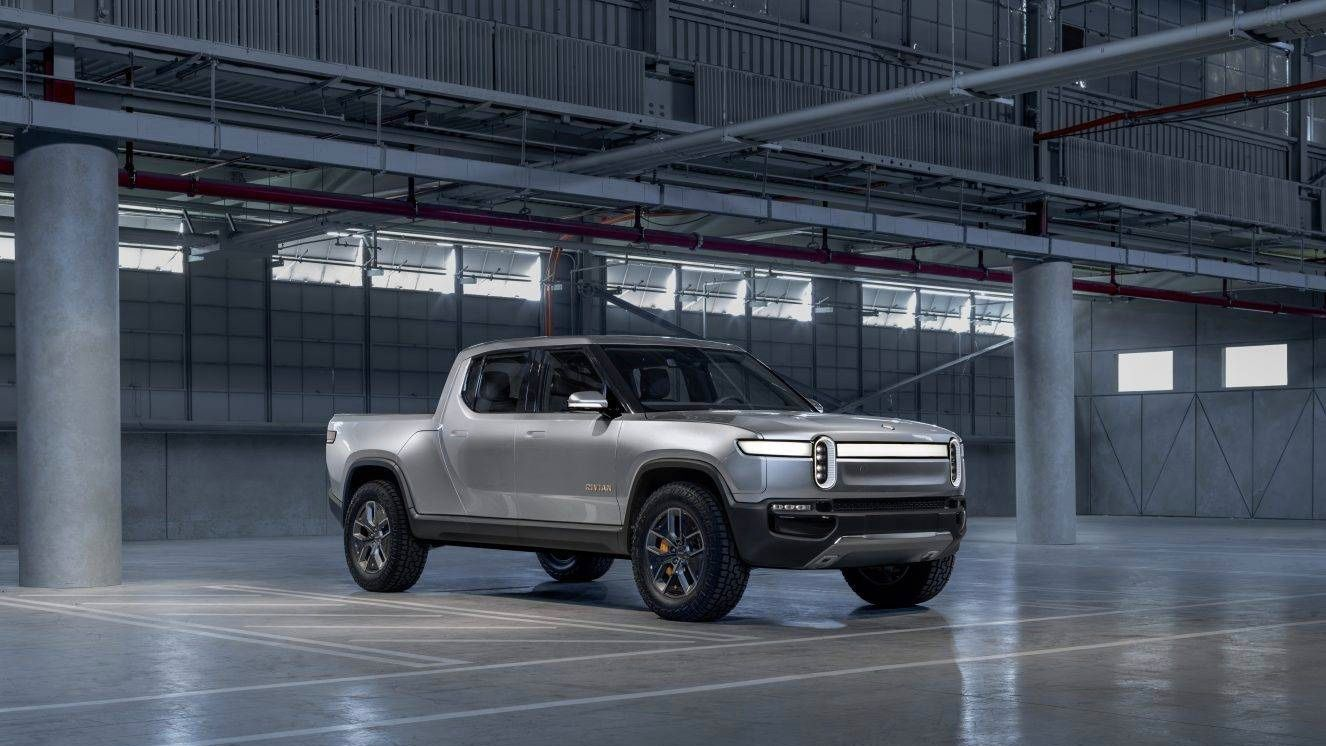Chinese New EV Company Sees Aesthetic Fatigue, Talks About Rivian, a New American EV Company
Rivian is not a typical new EV company. Founded in 2009, the company initially planned to launch an affordable sports car, but in 2011, it shifted its focus to developing autonomous electric vehicles. Historically, it is different from new EV startups such as Nio and XPeng Motors that have emerged in the past two years. More accurately, it is a new EV company that emerged in the same era as Tesla.
At the Los Angeles Auto Show in November 2018, Rivian unveiled the R1S, a hardcore electric SUV, and R1T, an electric pickup truck that had been in development for several years.
In February 2019, Amazon announced a $700 million investment in Rivian, leading a new round of financing. With the $500 million funding that Rivian had previously raised, the new EV company became more promising.
The War of Pickup Trucks
As we mentioned in yesterday’s “Unboxing of the Kyntruck EV Pickup“, “Every man has a dream to own a hardcore pickup truck.” Due to well-known reasons, the number of pickup trucks in China is far less than that in the United States, but how popular are they in the United States? Here is the sales distribution map.
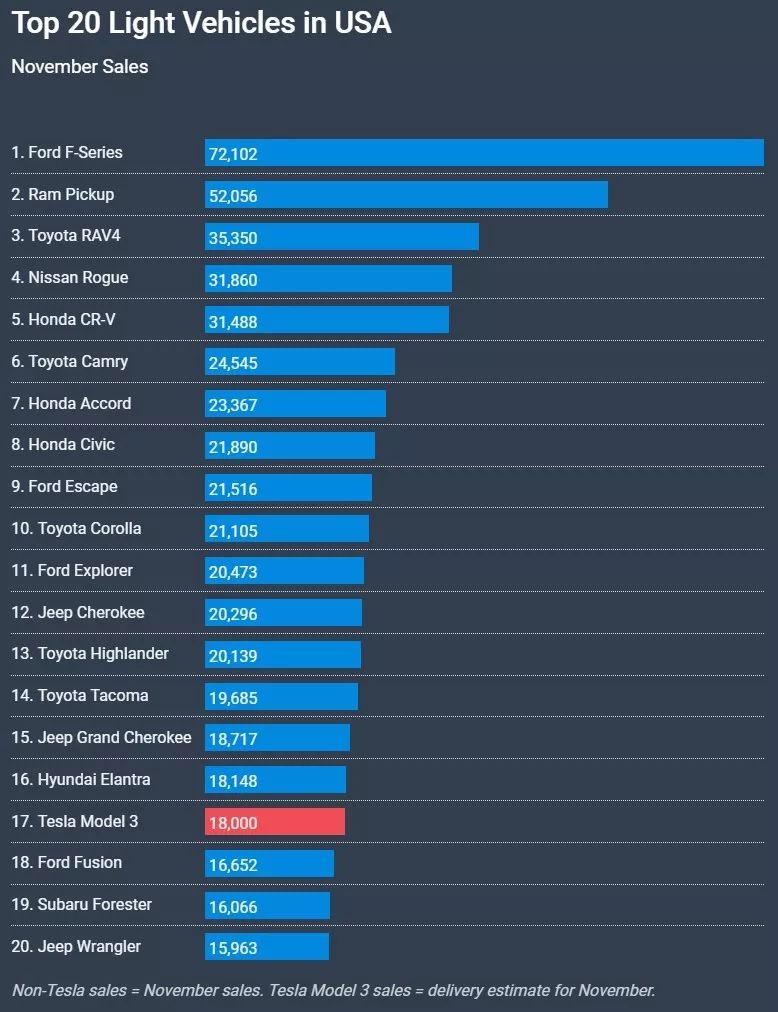
Pickup trucks occupy the first two positions in the sales ranking of light vehicles in the United States. Even considering the seasonal sales factors, their annual sales volume exceeds 500,000 units, which type of vehicles in China can achieve such sales? Wuling Hongguang sold 476,000 units in 2018.
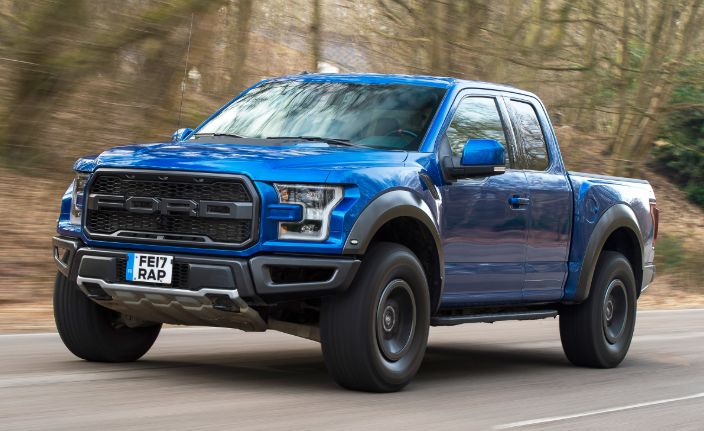 To some extent, pickup trucks do play the role of “America’s Wuling Hongguang”: as a tool vehicle, pickup trucks need to be powerful and have strong performance to carry goods and tow trailers. Another part of pickup trucks has luxurious attributes, with luxurious interiors, spacious space, and rich functions, with an average price of over $60,000.
To some extent, pickup trucks do play the role of “America’s Wuling Hongguang”: as a tool vehicle, pickup trucks need to be powerful and have strong performance to carry goods and tow trailers. Another part of pickup trucks has luxurious attributes, with luxurious interiors, spacious space, and rich functions, with an average price of over $60,000.
Which category does the Rivian R1T belong to? A bigger question is, what are the interesting aspects of making pickups purely electric?
First of all, it is necessary to point out that no matter which niche market is entered, product definition must be based on specific usage scenarios.
For example, in 2017, Tesla launched a pure electric semi-truck, the Semi Truck. Don’t be fooled by the styling and interior of this car, and the 0-100 km/h acceleration in 5 seconds. Elon Musk emphasized the TCO (Total Cost of Ownership: the total cost of ownership, including the cost of product purchase, use, and maintenance in the later stage) advantage of this car compared to same-class fuel semi-trucks at the launch event.
For logistics giants and freight companies, lower total ownership costs are the driving force behind the purchase of pure electric semi-trucks. Whether the styling is avant-garde and the acceleration is fast is not so important.
Therefore, for a car company, if pickups are widely used as tool vehicles, you should highlight its tool attributes; if it is used as a luxury car, you should highlight its luxury.
R1T VS Ford F150
The R1T is very interesting, please be patient and read on.
First, a comparison of the basic parameters of Ford’s best-selling F150 3.5T Raptor Performance Enhancement Edition and the Rivian R1T is given below.
The following image shows a comparison between the two:
!
Next, let’s talk about the advantages of changing from internal combustion engines + transmissions to pure electric power, namely, 0-100 km/h acceleration. The R1T’s entire lineup has entered the 5-second club, while the Raptor ranges from 6 to 8 seconds. However, because it is a tool vehicle, the demand for aggressive acceleration is not that strong, so let’s put this aside.
What are the most critical product dimensions for tool cars?
Performance## Horsepower Matters
Power does matter. Thanks to the natural advantage of electric motors, all four permanent magnet motors of R1T provide full-time torque vectoring and all-wheel drive. Except for the basic model, the output power of the other two models is far superior to the “performance-enhancing” version of the Raptor. In addition, the four-motor all-wheel drive can achieve more precise power output and responsive handling than the engine.
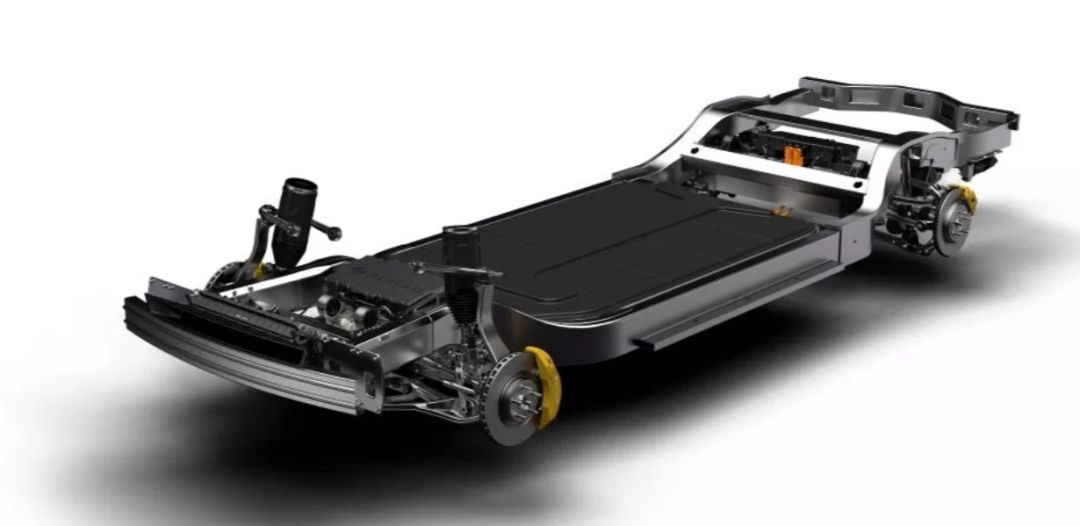
The R1T’s front double-wishbone and rear multi-link suspension support dynamic roll control and adaptive shocks. The actively adjustable air suspension can adjust the ground clearance according to road conditions.
However, having literal parameters is not enough. According to Rivian, the battery pack of R1T has a high-strength protective cover and sealing design to ensure that the battery pack will not be pierced on off-road or sandy roads, ensuring the safety of the battery pack. In addition, R1T has good water wading capabilities. Autoblog’s evaluation is, “R1T has a water wading capability of up to one meter without any restrictions, which basically means that you can drive it until it floats in the water.”
In addition, considering the strong demand for power of pickup trucks in mountain off-road scenarios, Rivian has developed an advanced cooling system to adaptively control the battery pack temperature in different terrains and road conditions.
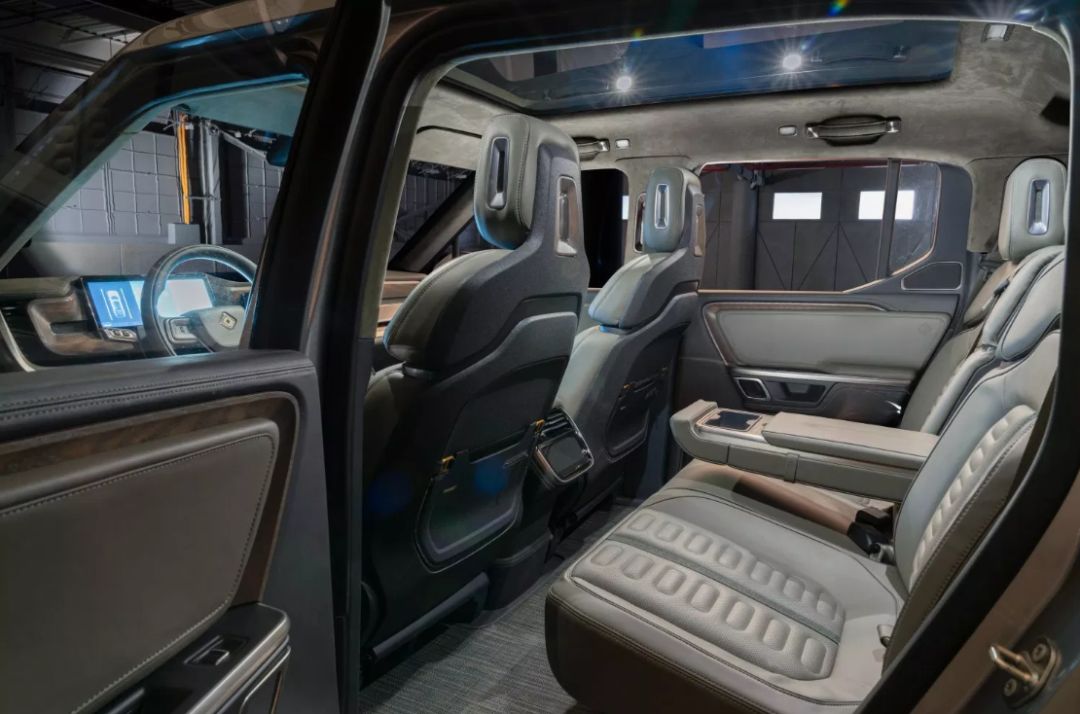
In addition to six USB ports throughout the vehicle, R1T also has three 110V power outlets with a power output of over 400W. The flagship model has a large battery pack of up to 180 kWh, and it is no problem to cool outdoor camping drinks or use a small microwave oven to heat food.
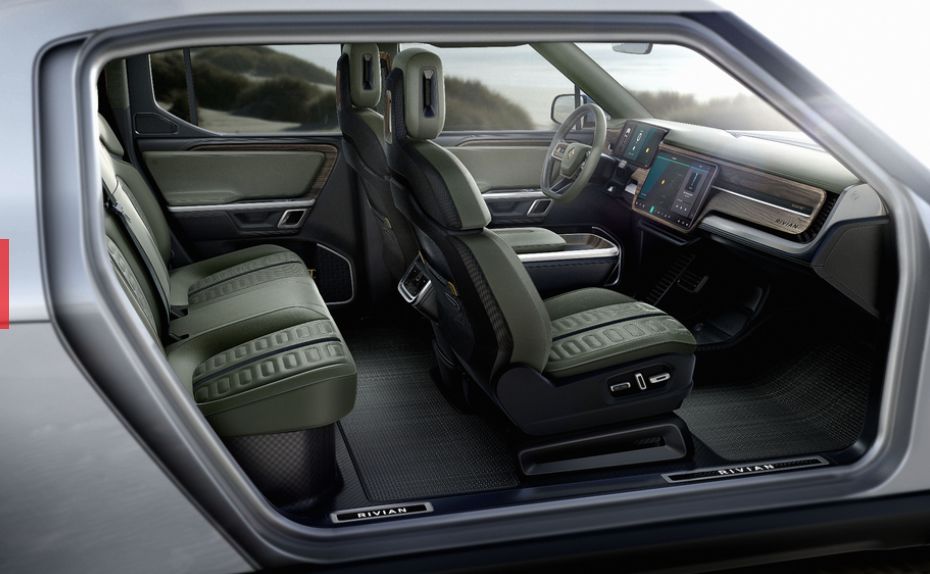
Finally, R1T has placed an LED flashlight inside the door panel. As Motortrend puts it, “just like the umbrella placed inside the door panel of a Rolls-Royce.”
Note that these are all configurations or targeted optimizations added by Rivian based on the demands of R1T as a utility product in corresponding usage scenarios. This is important.
Range
The Raptor does not have this problem, but a pure electric pickup truck as a utility vehicle cannot be stranded halfway. R1T has done well in this regard, with three models equipped with 105/135/180 kWh battery packs respectively, and EPA ranges of 370/480/640 km respectively.The foreign media directly said that the entry-level battery pack of R1T is larger than the flagship battery pack specifications of Model S. Although the rogue comparison between passenger cars and pickup trucks is not worth advocating, it can be seen that Rivian is still very sincere about the range issue.
Safety
First of all, R1T is a pickup that has received dual 5-star safety ratings from IIHS and NHTSA.
Let’s talk about passive safety first. R1T completely lays the huge battery pack on the chassis, with the motor, suspension, braking system, and cooling system all located below the top of the wheels in an exaggerated manner.
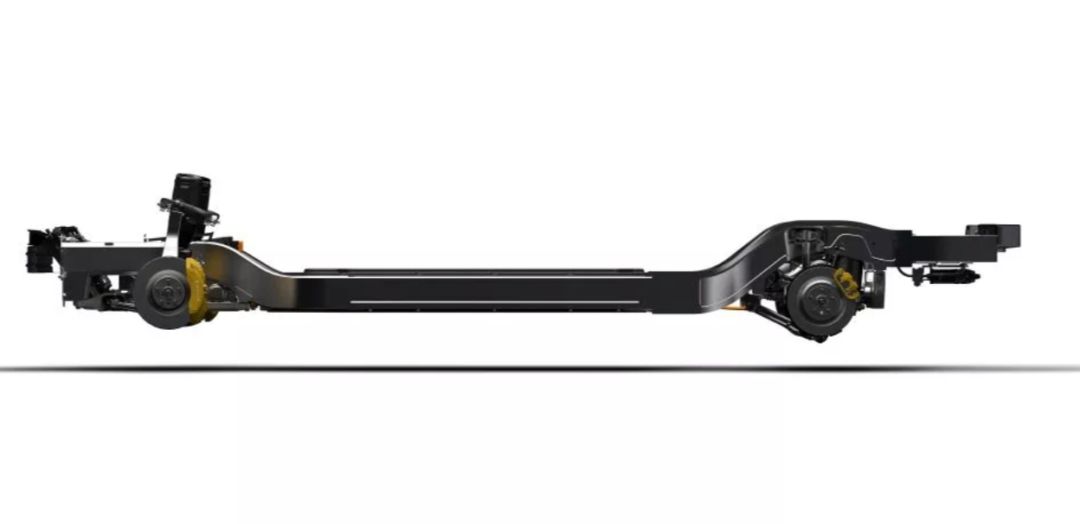
The advantages of this design are obvious: R1T greatly reduces the center of gravity relative to gasoline pickups. All models need to reduce the center of gravity, which can reduce the probability of rollover accidents during driving, but pickups especially need to do so. Because pickups need to deal with the challenges of driving safety posed by the uneven mountainous roads in off-road scenarios.
Rivian claims that the center of gravity of R1T is equivalent to that of gasoline sports cars. Although this is not so exaggerated, it is undoubtedly lower than that of gasoline pickups. A lower center of gravity means that it can enter steeper road conditions. Rivian stated that R1T has undergone extensive mountain road off-road scene tests during the development stage and has been specially tuned for off-road surfaces.
Back to passive safety, R1T is equipped with a full set of sensors, including ultrasonic sensors, cameras, millimeter wave radar, and lidar, to support level 3 hands-free autonomous driving technology.
Space
With Tesla’s demonstration, we have expected that pure electric pickups would have larger storage space. R1T’s storage space is indeed impressive.
Note that there is a cargo volume in the front configuration table. Like Tesla, R1T also has a huge front trunk. Although it is not easy to make a direct comparison, from the comparison between Model X and R1T, it can be roughly estimated that Rivian’s space utilization ability is basically at the same level as Tesla.
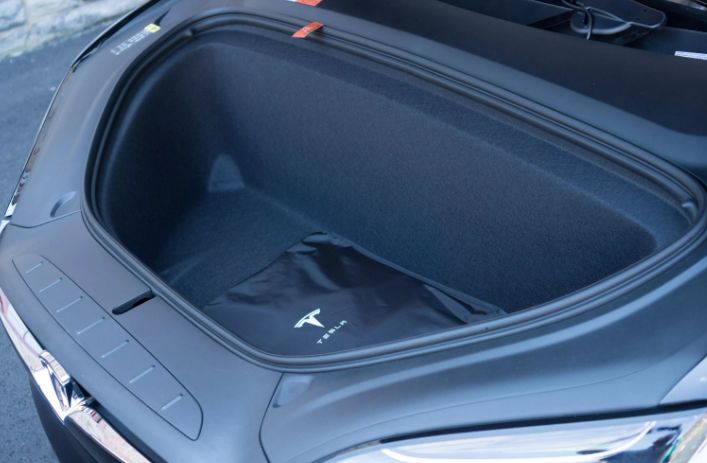
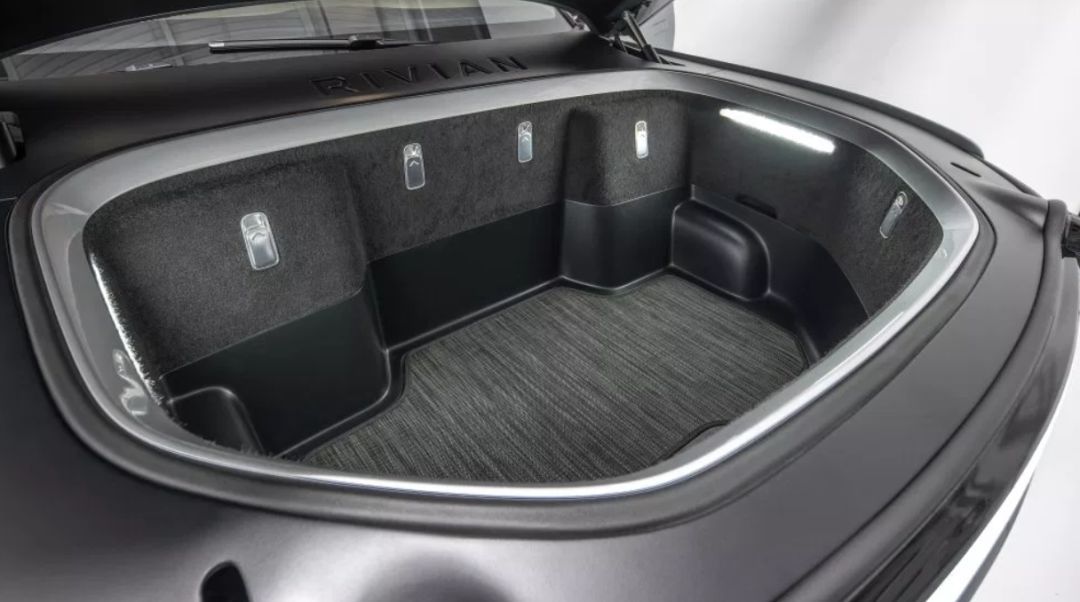
More interesting configurations are here
Under the rear seat, R1T is equipped with a storage box called “Gear Tunnel” with a volume larger than the front trunk. Rivian claims that you can place any object larger than 350L such as skis, golf bags, strollers, or other items in the Gear Tunnel.
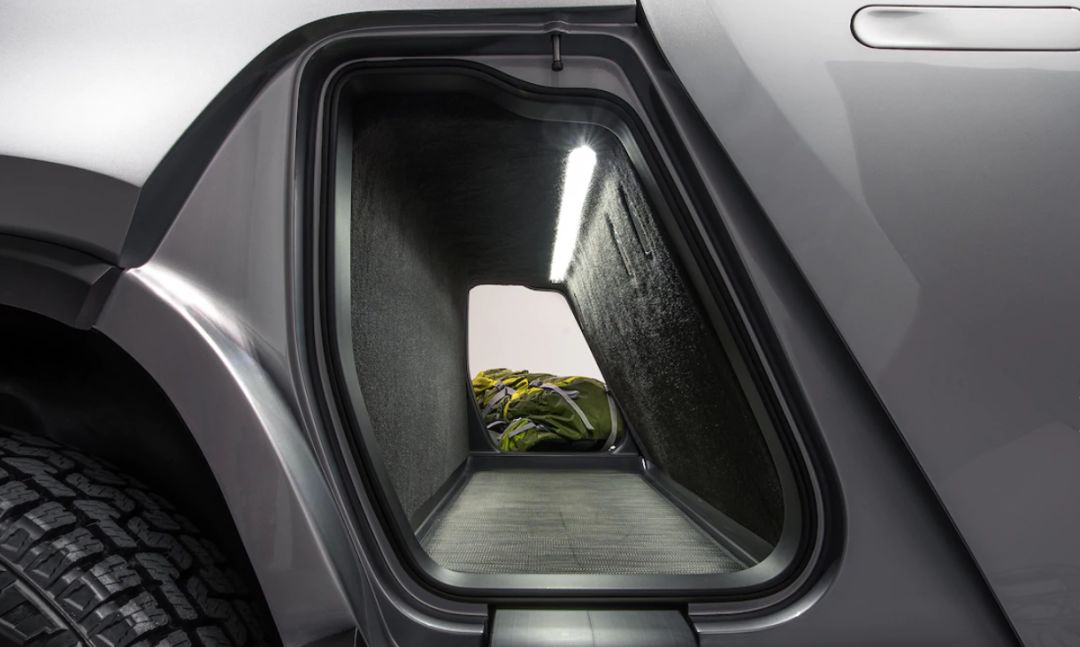
How to Build a Luxury Pickup Truck?
There are many similarities between a utility pickup truck and a luxury pickup truck, such as high performance, long range, high safety, and large space. R1T has already achieved all of them.
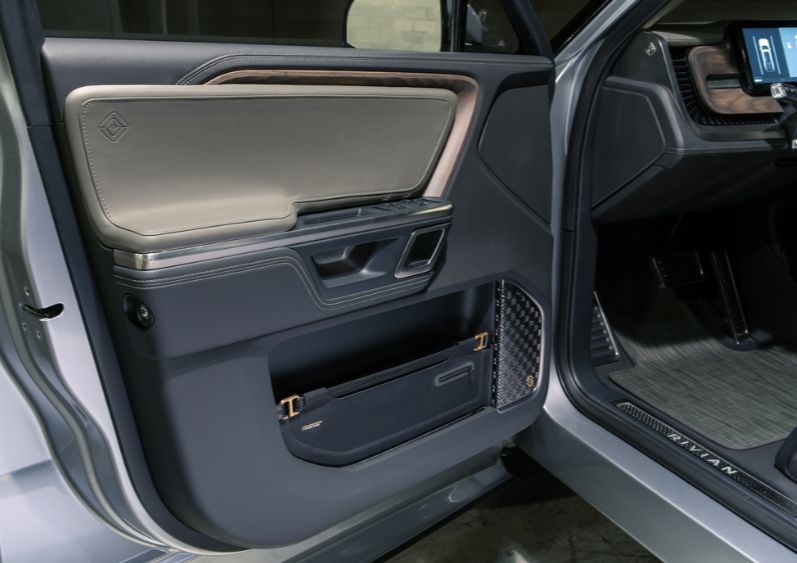
In addition, luxury pickup trucks are required to have mature designs, exquisite workmanship, and abundant functions. For a startup company, these requirements are a bit demanding. A simple and rude approach is to follow Tesla’s “Smart is the new luxury” route.
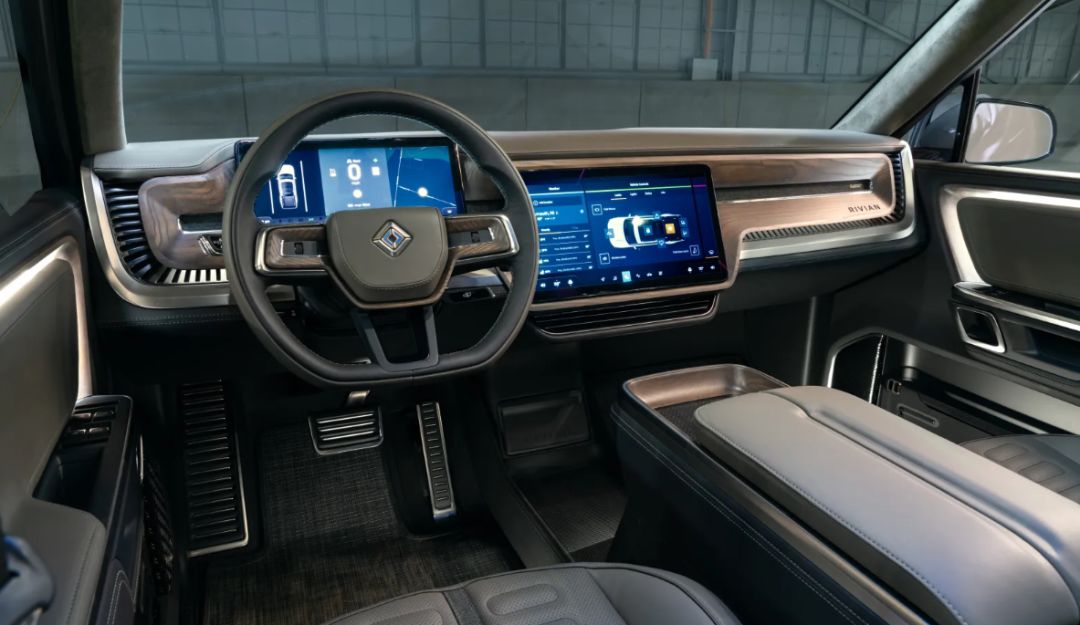
In addition to the L3 level automatic driving system mentioned earlier, R1T is equipped with a 12.3-inch instrument panel and a 15.6-inch central control screen. The Ethernet architecture-supported Internet of Vehicle platform can update and control the vehicle status. In addition, R1T also supports whole-vehicle OTA and can enrich and update vehicle functions and entertainment resources after delivery.
These are the basic product information of R1T. What I want to say is as a small company, how can we create Game Changer-style products like Model 3 and Semi Truck in a highly competitive market?
- Firstly, thoroughly solve the problems that gasoline vehicles do not have, such as range and battery safety.
- Secondly, leverage the advantages of pure electric powertrains to greatly outperform competitors in key product dimensions defined by gasoline vehicles such as performance, space, and vehicle safety.
- Finally, think about the problems in the product application scenario. Even though Ford introduced the first-generation F-series pickup truck as early as 1948, trust me, there are still many needs that existing products cannot meet.
I am spending so much space elaborating on a product that will not be put into production until the end of 2020 even if everything goes smoothly because R1T is, in my opinion, a very Tesla-like product.## Tesla Pickup
In the article “This is Tesla Model Y“, we mentioned that Elon Musk hasn’t been as excited about Model Y’s product details in the past six months. On the one hand, Model Y’s innovation priority has decreased in Tesla’s product line; on the other hand, Tesla Pickup has become Elon’s most focused project.
For example, at the 2018 earnings conference, Elon said, “Tesla Pickup will be something quite unique, unlike anything else.”
Does this mean that Tesla has only recently begun to focus on this pickup sub-market, and the reason for pushing Tesla to build a pickup is that it is the best-selling sub-product in the American light vehicle market?
In fact, that’s not the case. From Elon’s “Top Secret Tesla Master Plan” posted on the Tesla website on June 20, 2016, Tesla’s product mix for the passenger car market has always included Model S/X/3/Y, as well as a “new pickup.”
Therefore, Tesla Pickup is not like the all-electric semi-truck, which is a product of Tesla’s excess engineering and technological capabilities. As an established product in the strategic plan, with Model Y’s project confined with cost control constraints, the Tesla Pickup team will surely go all out.In fact, Tesla has already taken notice of the R1T. During the Los Angeles Auto Show, Tesla’s Chief Designer Franz von Holzhausen was seen closely examining the styling and interior design of the R1T.
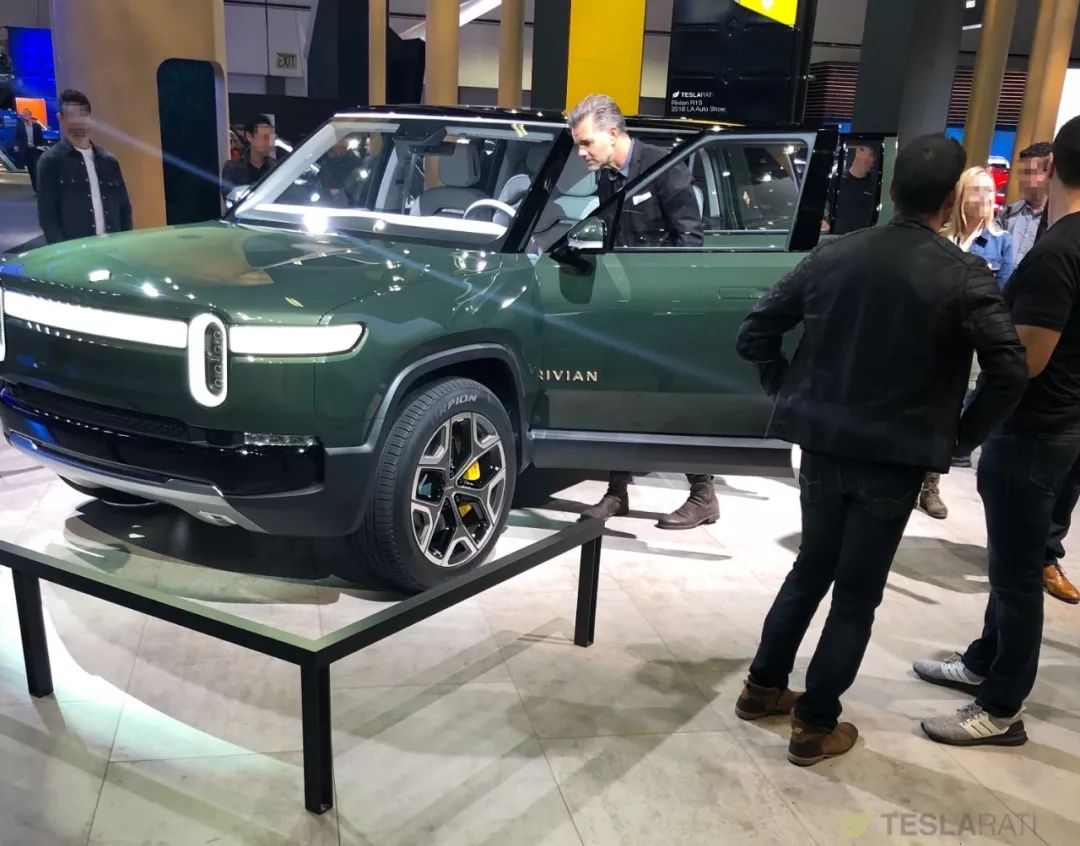
The challenge facing Tesla is that a smaller competitor unencumbered by engine technology constraints has released a uniquely Tesla-like product ahead of them, making Tesla’s pickup truck somewhat passive in comparison.
However, I remain optimistic about the Tesla pickup truck for several reasons. Firstly, from a capital point of view, the $700 million investment led by Amazon, in addition to the previously raised $500 million, has solved Rivian’s immediate funding needs, but it is not enough to get the project to completion and delivery.
Secondly, in terms of team size, Tesla, as a large company that occasionally lays off employees, will not go into further detail; In 2018, Rivian had only 750 employees and no large-scale expansion, making it impossible for this team to support R1T production and delivery.
Thirdly, in terms of project experience, the Tesla pickup truck is Tesla’s fifth volume product after Model S/X/3/Y. Whether it’s product definition, research and development, production, delivery or after-sales, Tesla is far more experienced than Rivian, especially in balancing cost control and innovation investment.
Fourth, on cost control, unlike German giants who focus on developing multiple brands and platforms and spreading development costs, Tesla pursues scale effects on a higher dimension. For example, the 2170 battery not only supplies the automotive business line but also all energy storage products; the Model 3/Y and Semi Truck use the same motor, with only a difference in quantity.
And finally, on technology accumulation, the continuously iterated Tesla Autopilot may enable high-speed and even more autonomous driving in more scenarios when the pickup truck is launched. In contrast, R1T’s L3-level autonomous driving system is a pure rookie. One has only to look at how many times Tesla Autopilot has missed its deadlines to understand just how challenging autonomous driving technology really is.In the final analysis, all of our doubts about Rivian stem from the fact that it is a new company without experience in car manufacturing. How can such a company compete with Tesla, which has manufacturing experience as well as complete engineering and technological innovation capabilities?
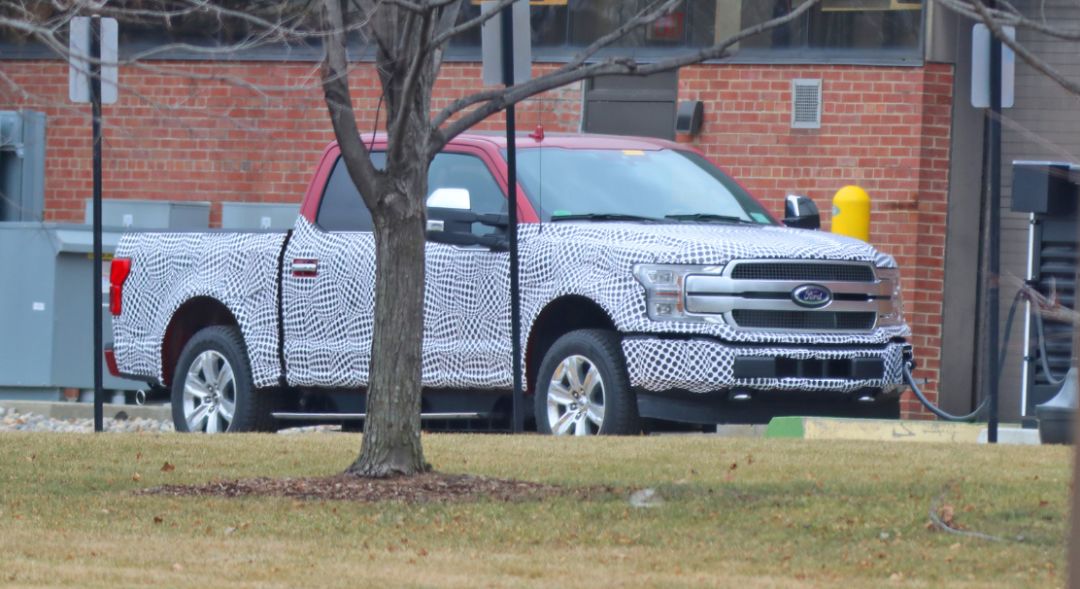
Ford Raptor has always been a supporting character in this article. Ford has tested the electric version of Raptor, but looking at Ford’s lack of accomplishments in the field of autonomous driving and electrification over the years, it is clear that it can no longer keep up with General Motors and Tesla.
Perhaps, Rivian + Ford VS Tesla is the best PK.


This article is a translation by ChatGPT of a Chinese report from 42HOW. If you have any questions about it, please email bd@42how.com.
